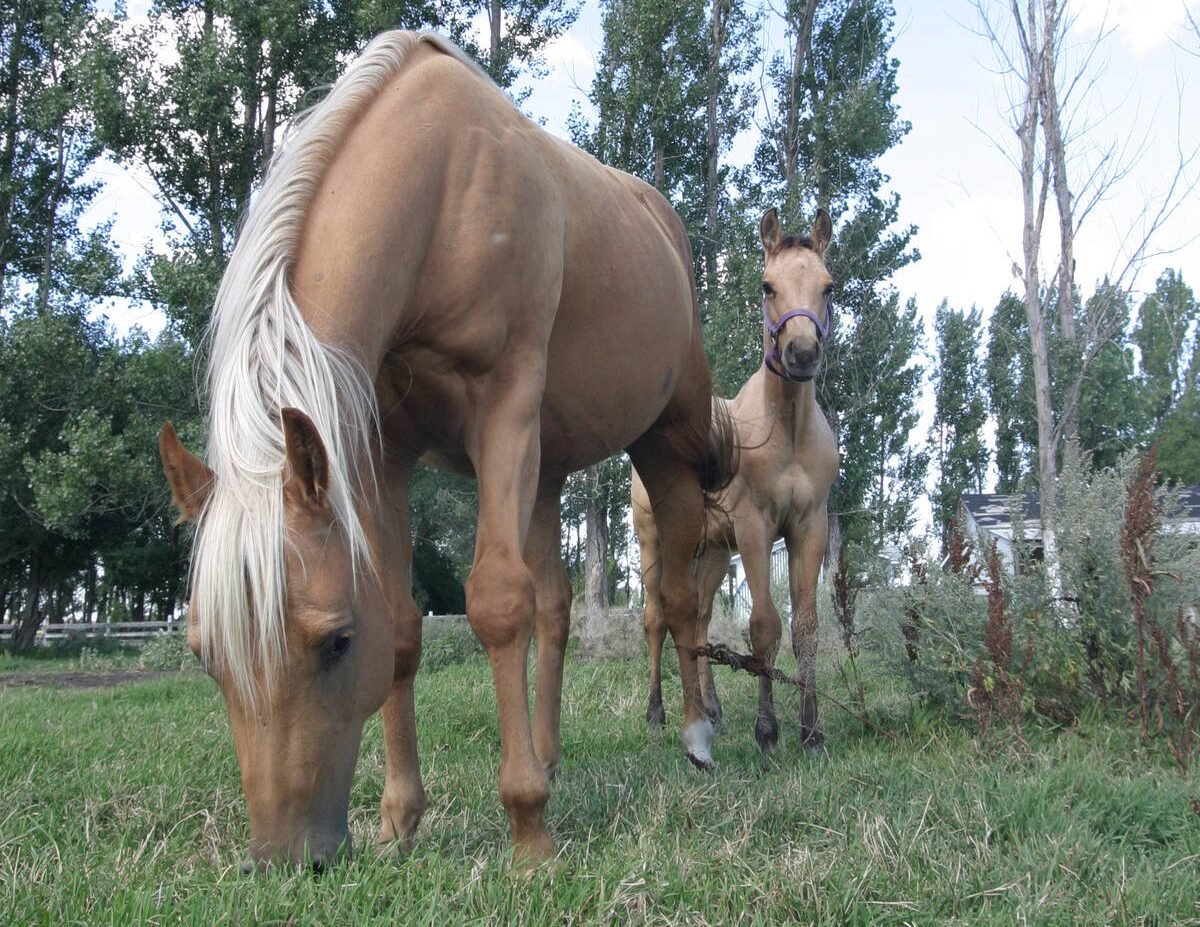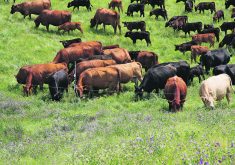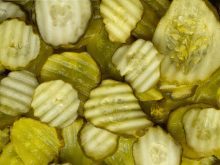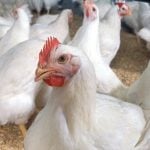Cash income
To the Editor:
This letter is in response to comments made by Agriculture Canada officials in the June 18 issue of the Western Producer, stating that the farm economy is not as bad as farm leaders claim. Jack Gellner, Director of Economic and Industry Analysis, stated: “1997, from a cash perspective, was a very good year and we should not forget that,” and the 1997 gross cash income “is money farmers have to spend.”
Mr. Gellner is right, it is money farmers have to spend – on fertilizer, seed, pesticide, herbicide, fuel, oil, machinery, repairs and so forth.
Read Also

Growth plates are instrumental in shaping a horse’s life
Young horse training plans and workloads must match their skeletal development. Failing to plan around growth plates can create lifelong physical problems.
Although 1997 marked the sixth year of record cash receipts for farmers nationally, net incomes dropped 57 percent for farmers in Manitoba.
A person in Mr. Gellner’s position should know that cash receipts are not a true indication of the financial health of an industry. When inventory adjustments and depreciation are taken into account, the picture is very different.
At the end of the day, it is the farmer who has the least amount of money in his pocket. This is the money left to ensure quality of life for his family. In the article, Agriculture Canada officials gauge the economy of Canadian agriculture by how much of a financial beating individual producers can sustain, and do not give any thought to the personal income of farmers and their families.
The primary producer is the generator of the agricultural economy, yet it would appear that his personal circumstances are of no consequence.
Keystone Agricultural Producers fully agrees with Senator Gustafson in his challenge of the department’s view of the agricultural economy.
We also support Senator Gustafson’s initiative to hold a series of hearings on the farm income issue in September and believe it will prove something we already know: farmers are facing tough times. Unfortunately, by then it may be too late.
– Donald R. Dewar, President,
Keystone Agricultural Producers,
Winnipeg, Man.
Elk hunting
To the Editor:
I was surprised by the objectivity of Ian Bell’s write-up about hunting of farm-raised elk in the Western Producer.
One can only wonder about the difference between the Saskatchewan NDP government and their realistic and pragmatic approach in this matter, and their ideological brothers and sisters here in Manitoba viewing this as a “vile practice.” It looks like here in Manitoba, the ruling PC party as well as in particular the NDP opposition are trying to surpass each other in setting personal, moral and ethical standards in this question. …
Is this a political show to score points with some “concerned urban citizens,” and to appease the Winnipeg-based media that take great delight in turning any new rural development into a “contentious issue”?
Just wait until the prices for breeding bulls decline and the aboriginal people offer trophy bulls for hunting. Then their moral and ethical “concerns” will be no longer a factor, as was the case with elk ranching in Manitoba, which would have never happened without the involvement of the First Nations ignoring the former provincial moratorium on game farming.
So all one has to do is wait until some First Nations start raising whitetail deer and moose in captivity to see them added to elk ranching, and to offer trophy bull elk for hunting to have this legalized as well under the rules and regulations presently worked out in Saskatchewan and Alberta.
– Peter Kalden,
St. Martin, Man.
Real enemy
To the Editor:
I see the front-page headline, “Action sought to curb subsidies.” This action is pointless, needless to say.
Any Army commander will tell you what’s the use or point of blasting or marching forward when the enemy is fast marching on you right from behind. In this case, it’s urban inflation gobbling up whatever is left from farm income.
There seems to be no unity between rural and urban Canada.
– John Pokorney,
Tilley, Alta.
Gopher poison
To the Editor:
Your July 16 front page has an article on gopher problems and mentions the reduced effects of current poisons available.
Page 6 has a cartoon on this same matter.
Some years ago we had a serious gopher problem in our cow pasture. I had some good strychnine and used wheat as a mix.
I would go into the pasture on my ATV and observe holes that I saw gophers going into. I would then put a small spoon of wheat into the hole.
During the summer, I practically eliminated the gophers.
Only one dead one was found near a hole – it appears the rest died in their hole. I saw no harmful side effects. We now have a few gophers and I actually enjoy observing them.
We should have access to good strychnine again. It must be properly used so that it kills only what is intended.
Our people in Government should be out trapping gophers on weekends if we are not supposed to poison them.
– Henry Rempel,
Plumas, Man.
Gopher money
To the Editor:
In the edition of July 16, a news item “Great gobs of gophers get gutsy.” This reminds me of when I was a youngster in 1916.
It was a dry year. Dad had a small field, about seven acres on which he had sowed oats.
It was my job to trap gophers on this field. I had about a dozen traps. Dad had made a device to press the springs of my traps because I was not strong enough to do this.
I was to get a cent a tail. Morning and evening and during holidays I cleared these traps. In the fall I had caught 700 gophers, $7.00.
Needless to say, dad did not harvest any oats that summer.
The following year gopher poison was supplied by the municipality.
Instead of trapping, Saturdays were occupied by putting poison in gopher holes.
This took place in the Vermilion area of Alberta.
– E. Schurman,
Reston, Man.
Wheat Growers
To the Editor:
I am very disappointed with the Western Canadian Wheat Growers Association and Larry Maguire. They do not represent the wheat farmers of the Prairie Provinces.
First they want to get rid of the Canadian Wheat Board, and now they went on side with CP Rail. ….
Why doesn’t the Canadian Wheat Growers Association fight to have some of our farming costs reduced, such as over $1 per bushel for freight, another 50 cents or more a bushel for sprays, our high cost of machinery and taxes, etc.?
If we notice, there are three grain companies dominating the U.S.A. grain trade (Cargill, ADM and ConAgra).
I do not see any of these multinationals showing us their financial books or any of their private dealings. I wonder, why should CWB?
I also notice many farmers in the U.S.A. feel we have a good grain marketing system.
Those people belonging to Western Canadian Wheat Growers Association don’t like our grain system – move to the U.S.A. See how good it is there!
– Frank Gechter,
Seven Persons, Alta.
Fertilizer effects
To the Editor:
I am writing in regard to a statement that I made in replying to a question after my presentation on climate change to the semi-annual meeting of the Canadian Federation of Agriculture in Fredericton, July 24.
This statement, included in a report by Barry Wilson in the July 30 issue of The Western Producer, referred to the potential for increased use of nitrogen-fixing plant varieties to reduce use of commercial fertilizers and thereby reduce emissions of nitrous oxide, a greenhouse gas.
My statement would have been more accurate if I had noted that the production of commercial fertilizers involves the extraction of nitrogen from the atmosphere. A full life-cycle analysis, including examination of on-farm fertilizer management practices, is therefore necessary to determine whether commercial fertilizers are a net contributor to Canada’s greenhouse gas emissions.
I am impressed by the interest of the Canadian Fertilizer Institute and its Managing Director, Roger Larson, in the climate change issue, particularly in seeking ways for agricultural producers to reduce emissions of nitrous oxide.
– Mark Ziegler,
Senior Policy Advisor,
Climate Change Secretariat,
Ottawa, Ont.
Helping farmers
To the Editor:
This letter is in response to an article in the June 15 Western Producer, titled “Sask Pool gives governments advice on helping farmers.”
Please, Mr. Larsen, do not give governments any more advice on my behalf.
You have already convinced governments that you are helping me by closing all the elevators in my area and thereby forcing the railway to abandon its line and service to the farmers.
… Sask Pool has become just another grain-buying company concerned only with the corporate bottom line, not with the survival of the average farmer.
Once again, Mr. Larsen, do not speak for me any more. The farmers in this area are learning that farmers must do the speaking for themselves.
– David J. Brown,
Kyle, Sask.
Farm chemicals
To the Editor:
I had read your stories about cattle dying after eating “treated” canola seeds, but the account of the 23-year-old who died after using treated seed really hit home to me. My son is 23 too. I cannot understand how a seed that can be so lethal can be safely consumed by the population at large once it has grown and is processed. …
These needless deaths are so tragic. No doubt they are not the first and will not be the last.
We are all guinea pigs to the big chemical corporations, and all they are motivated by is profit.
I farm organically (on a minute scale) and have only a vague idea of what prairie farmers are up against.
My family-in-law all spray – everyone seems to where they farm. My Manitoban brother-in-law once asked a dealer about combining certain chemicals and was told that he could. He mixed up the concoction, sprayed it, and his fields went black. They were unproductive for a long time.
Surely these chemicals are folly. They are not so innocuous as the companies would have us believe.
Too bad people (and cattle) have to find out the hard way, paying with their lives.
It just seems ridiculous to eat anything that originates in something so lethal! I feel so sad for the families. We should all be angry with the corporations creating killer seeds.
– Gabriela Grabowsky,
Kaslo, B.C.














